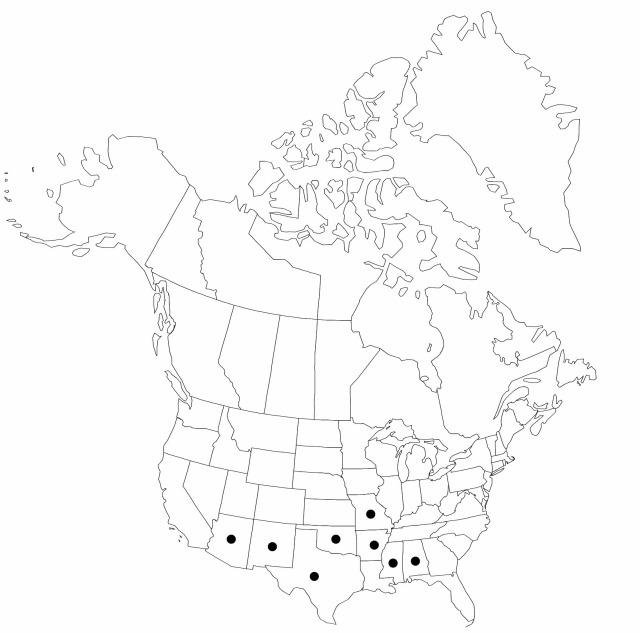Cyperus retroflexus
Proc. Acad. Nat. Sci. Philadelphia. 14: 9. 1862.
Herbs, perennial, cespitose, rhizomatous. Culms trigonous, basally tuberous-thickened, (5–)15–40(–80) cm × 1–2.5 mm, glabrous. Leaves flat to V-shaped, (5–)10–30(–60) cm × (0.5–)1–3(–4) mm. Inflorescences: spike 1, loosely to densely ovoid to cylindric, 8–36 × 8–20 mm; rays 3–6(–9), (5–)10–32 cm; bracts 3–6, horizontal to ascending at 30°, V-shaped, (1–)3–15(–30) cm × 0.5–4.5 mm; rachilla deciduous, wings 0.5–0.7 mm wide. Spikelets (5–)20–35(–65), linear to oblong (without narrowed basal portion), quadrangular; (2.2–)4–10(–18) × 0.7–1.1 mm; floral scales persistent, 1–5, appressed, pale greenish white laterally, stramineous with reddish dots, or deep red, greenish or light brown medially, 3–6-ribbed laterally, narrowly ovate to oblong-elliptic, 2.6–3.9 × 1.6–2 mm, apex rounded to ± acute, entire, mucronulate; distal scale with glabrous midrib and mucro 0.1–0.3(–0.5) mm; sterile terminal scale of spikelet only 0.4–0.6 mm wide, involute, frequently uncinate. Flowers: anthers (0.3–)0.4–0.6 mm; styles 0.4–0.5 mm; stigmas 0.5–0.9 mm. Achenes light brown to reddish brown, sessile or slightly stipitate, ellipsoid, (1.8–)2–2.4 × 0.6–0.8(–0.9) mm, apex slightly apiculate, surfaces puncticulate.
Phenology: Fruiting mid summer–early fall (Jul–Sep).
Habitat: Damp, disturbed soils, croplands
Elevation: 0–1000 m
Distribution

Ala., Ariz., Ark., Miss., Mo., N.Mex., Okla., Tex., Mexico.
Discussion
Cyperus retroflexus is distinguished from other species of Cyperus with deciduous spikelets by the involute, sterile terminal scale of the spikelet. In plants with cuspidate scales, the terminal scale is usually somewhat recurved, giving the appearance of a hook at the end of the spikelet.
Selected References
None.
